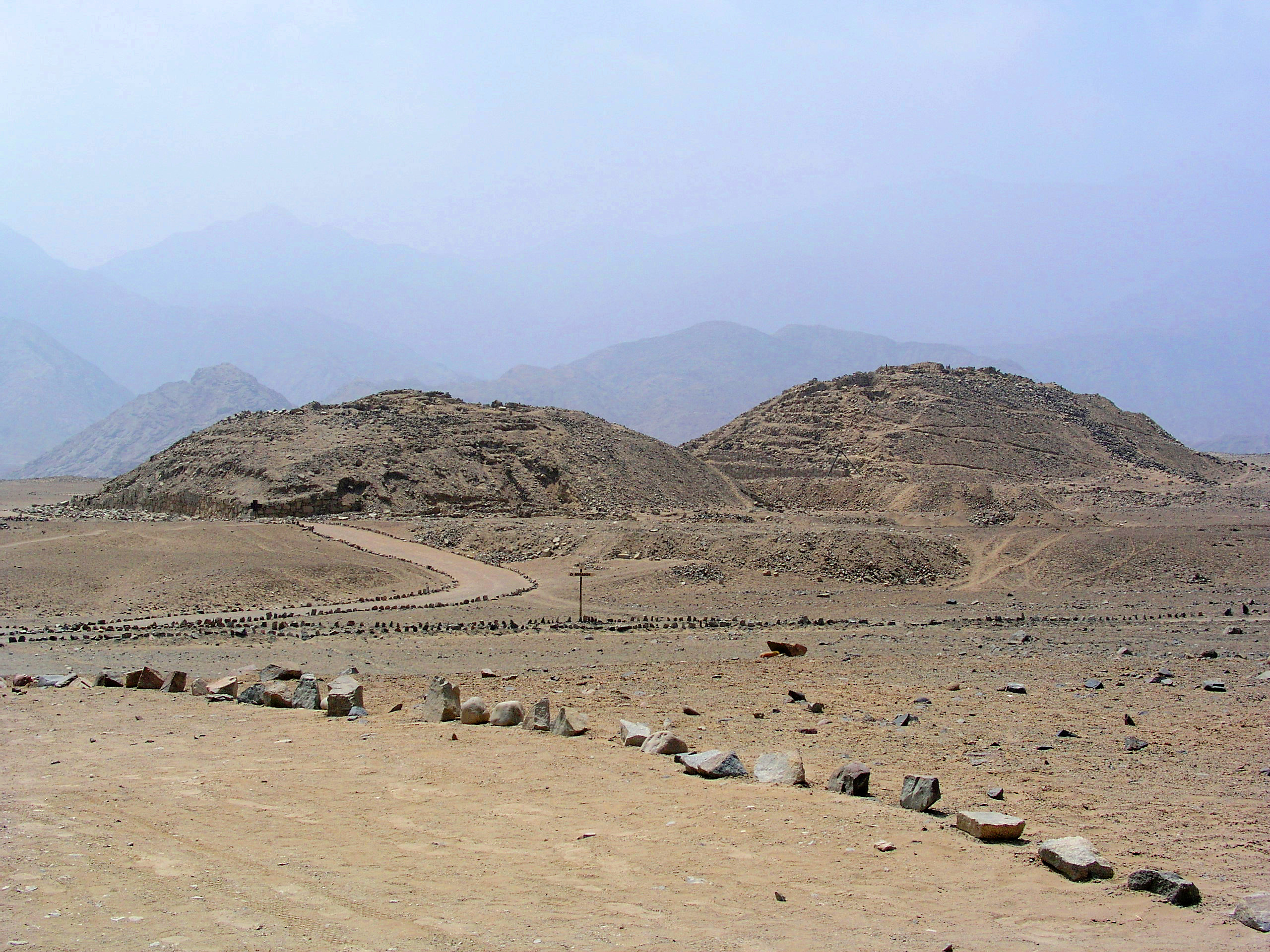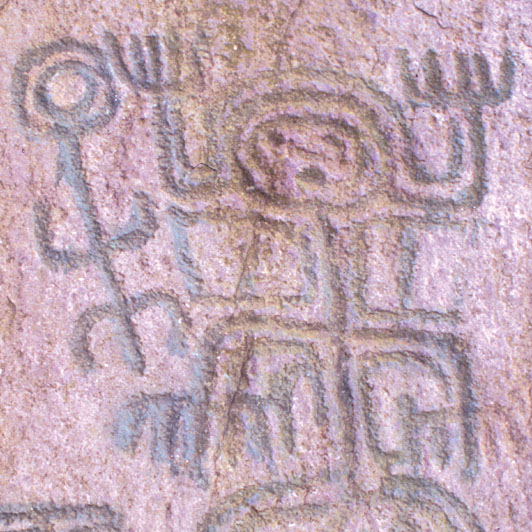|
Lake Herrera
Lake Herrera is a small lake located at from the urban centre of Mosquera and about west of the capital Bogotá in Cundinamarca, Colombia. The Andean lake has made its name in the Herrera Period, the period in the history of central Colombia before the Muisca Period, after archaeologist Sylvia Broadbent excavated ceramics around Lake Herrera in 1971. Description Lake Herrera is situated on the Bogotá savanna; the southwestern part of the Andean high plateau in the Eastern Ranges; the Altiplano Cundiboyacense. The lake is one of many remainders of the Pleistocene Lake Humboldt. It is the largest remaining natural water reserve on the Bogotá savanna and the reserve belongs to the municipalities Mosquera, Madrid and Bojacá. History Investigations by archaeologist Gonzalo Correal Urrego in 1984 have revealed the existence of a preceramic site with two layers. The oldest layer has been dated at 3410 years BP and the younger layer at 3135 BP. Correal Urrego has discov ... [...More Info...] [...Related Items...] OR: [Wikipedia] [Google] [Baidu] |
Mosquera, Cundinamarca
Mosquera is a municipality of Colombia in the Western Savanna Province, part of the department of Cundinamarca. Mosquera is close to the capital Bogotá and is part of its metropolitan area. The urban centre of Mosquera is situated at an altitude of on the Bogotá savanna. The municipality borders the localities Bosa and Fontibón of Bogotá in the east, Soacha in the south, Madrid and Funza in the north and Bojacá in the west.Official website Mosquera Etymology Mosquera is named after its founder, former |
Cordillera Oriental (Colombia)
The Cordillera Oriental ( en, Eastern Ranges) is the widest of the three branches of the Colombian Andes. The range extends from south to north dividing from the Colombian Massif in Huila Department to Norte de Santander Department where it splits into the Serranía del Perijá and the Cordillera de Mérida in Venezuelan Andes. The highest peak is Ritacuba Blanco at in the Sierra Nevada del Cocuy. Geography The western part of the Cordillera Oriental belongs to the Magdalena River basin, while the eastern part includes the river basins of the Amazon River, Orinoco River, and Catatumbo River. Within it, the Altiplano Cundiboyacense and the Sierra Nevada del Cocuy (with the only snowy peaks in this mountain range) stand out. The mountain range contains the most páramos in the world. Protected areas * Cueva de los Guácharos * Chingaza National Natural Park * Yariguíes National Park * Sierra Nevada del Cocuy * Sumapaz Páramo * Tamá National Natural Park * Los Estoraques Uni ... [...More Info...] [...Related Items...] OR: [Wikipedia] [Google] [Baidu] |
Hunter-gatherer
A traditional hunter-gatherer or forager is a human living an ancestrally derived lifestyle in which most or all food is obtained by foraging, that is, by gathering food from local sources, especially edible wild plants but also insects, fungi, honey, or anything safe to eat, and/or by hunting game (pursuing and/or trapping and killing wild animals, including catching fish), roughly as most animal omnivores do. Hunter-gatherer societies stand in contrast to the more sedentary agricultural societies, which rely mainly on cultivating crops and raising domesticated animals for food production, although the boundaries between the two ways of living are not completely distinct. Hunting and gathering was humanity's original and most enduring successful competitive adaptation in the natural world, occupying at least 90 percent of human history. Following the invention of agriculture, hunter-gatherers who did not change were displaced or conquered by farming or pastoralist groups in ... [...More Info...] [...Related Items...] OR: [Wikipedia] [Google] [Baidu] |
White-tailed Deer
The white-tailed deer (''Odocoileus virginianus''), also known as the whitetail or Virginia deer, is a medium-sized deer native to North America, Central America, and South America as far south as Peru and Bolivia. It has also been introduced to New Zealand, all the Greater Antilles in the Caribbean (Cuba, Jamaica Jamaica (; ) is an island country situated in the Caribbean Sea. Spanning in area, it is the third-largest island of the Greater Antilles and the Caribbean (after Cuba and Hispaniola). Jamaica lies about south of Cuba, and west of His ..., Hispaniola, and Puerto Rico), and some countries in Europe, such as the Czech Republic, Finland, France, Germany, Romania and Serbia. In the Americas, it is the most widely distributed wild ungulate. In North America, the species is widely distributed east of the Rocky Mountains as well as in southwestern Arizona and most of Mexico, except Baja California peninsula, Lower California. It is mostly displaced by the black ... [...More Info...] [...Related Items...] OR: [Wikipedia] [Google] [Baidu] |
Before Present
Before Present (BP) years, or "years before present", is a time scale used mainly in archaeology, geology and other scientific disciplines to specify when events occurred relative to the origin of practical radiocarbon dating in the 1950s. Because the "present" time changes, standard practice is to use 1 January 1950 as the commencement date (epoch) of the age scale. The abbreviation "BP" has been interpreted retrospectively as "Before Physics", which refers to the time before nuclear weapons testing artificially altered the proportion of the carbon isotopes in the atmosphere, which scientists must now account for. In a convention that is not always observed, many sources restrict the use of BP dates to those produced with radiocarbon dating; the alternative notation RCYBP stands for the explicit "radio carbon years before present". Usage The BP scale is sometimes used for dates established by means other than radiocarbon dating, such as stratigraphy. This usage differs from t ... [...More Info...] [...Related Items...] OR: [Wikipedia] [Google] [Baidu] |
Andean Preceramic
The Andean preceramic refers to the early period of human occupation in the Andean area of South America that preceded the introduction of ceramics. This period is also called pre-ceramic or aceramic. Earliest human occupations The earliest humans that came to South America are known as Paleo-Indians. This period is generally known as the Lithic stage. After this came the period that is widely known as Archaic, although there are also some different classifications of this period. The precise classification is complicated because somewhat different terminologies tend to be used for North America and Mesoamerica. The Andean preceramic period would include cultures that belong to Lithic and Archaic stages. Preceramic in Peru The Zaña Valley in northern Peru contains the earliest known canals in South America. These were small stone-lined canals which drew water from streams in the Andes Mountains region. These canals may have been built as early as 4700 BC. A great deal of a ... [...More Info...] [...Related Items...] OR: [Wikipedia] [Google] [Baidu] |
Gonzalo Correal Urrego
Gonzalo Correal Urrego ( Gachalá, Colombia, 23 October 1939) is a Colombian anthropologist, palaeontologist and archaeologist.Curriculum Vitae Gonzalo Correal Urrego He has been contributing to the knowledge of prehistoric Colombia for over forty years and has published in and English.List of publications by Gonzalo Correal Urrego - Correal Urrego is considered one of the ... [...More Info...] [...Related Items...] OR: [Wikipedia] [Google] [Baidu] |
Naturalis Biodiversity Center - RMNH
Naturalis Biodiversity Center ( nl, Nederlands Centrum voor Biodiversiteit Naturalis) is a national museum of natural history and a research center on biodiversity in Leiden, Netherlands. It was named the European Museum of the Year 2021. Although its current name and organization are relatively recent, the history of Naturalis can be traced back to the early 1800s. Its collection includes approximately 42 million specimens, making it one of the largest natural history collections in the world. History The beginnings of Naturalis go back to the creation of the Rijksmuseum van Natuurlijke Historie (abbreviated RMNH, National Museum of Natural History) by Dutch King William I on August 9, 1820. In 1878, the geological and mineralogical collections of the museum were split off into a separate museum, remaining distinct until the merger of the Rijksmuseum van Natuurlijke Historie with the Rijksmuseum van Geologie en Mineralogie (abbreviated RGM) in 1984, to form the Nationaal Natu ... [...More Info...] [...Related Items...] OR: [Wikipedia] [Google] [Baidu] |
Bojacá
Bojacá is a municipality and town of the Western Savanna Province, Colombia in the department of Cundinamarca. The urban centre is situated at an altitude of on the Bogotá savanna at from the capital Bogotá. The municipality borders Zipacón, Madrid and Facatativá in the north, Madrid and Mosquera in the east, Soacha and San Antonio del Tequendama in the south and Tena, La Mesa and Zipacón in the west.Official website Bojacá Etymology The name Bojacá comes from and means "Purple enclosure".[...More Info...] [...Related Items...] OR: [Wikipedia] [Google] [Baidu] |
Madrid, Cundinamarca
Madrid () is a town and municipality in the Western Savanna Province, part of the department of Cundinamarca, Colombia. The city is located at from the capital Bogotá. The city's main and biggest industry is the growing of flowers, especially roses which are mostly exported to the United States and Japan. Madrid borders Bojacá, El Rosal, Facatativá, Funza, Mosquera, Sibaté, Soacha, Subachoque, Tabio and Tenjo. Etymology Madrid is named after its founder; Pedro Fernández Madrid. History The area of Madrid was inhabited early in the history of inhabitation of the Bogotá savanna, evidenced by archaeological findings at Lake La Herrera (Lake Herrera). The Muisca inhabited the area before the Spanish conquest and had rich agricultural lands established in the region. Modern Madrid was founded on June 7, 1559. Madrid is well known because it harbors the Academy of Subofficers (non-commissioned officers) of the Colombian Air Force. The main highway to Medellín (also k ... [...More Info...] [...Related Items...] OR: [Wikipedia] [Google] [Baidu] |
Municipalities Of Colombia
The Municipalities of Colombia are decentralized subdivisions of the Republic of Colombia. Municipalities make up most of the departments of Colombia with 1,122 municipalities (''municipios''). Each one of them is led by a mayor (''alcalde'') elected by popular vote and represents the maximum executive government official at a municipality level under the mandate of the governor of their department which is a representative of all municipalities in the department; municipalities are grouped to form departments. The municipalities of Colombia are also grouped in an association called the ''Federación Colombiana de Municipios'' (Colombian Federation of Municipalities), which functions as a union under the private law and under the constitutional right to free association to defend their common interests. Categories Conforming to the law 1551/12 that modified the sixth article of the law 136/94 Article 7 http://www.alcaldiabogota.gov.co/sisjur/normas/Norma1.jsp?i=48267 the mu ... [...More Info...] [...Related Items...] OR: [Wikipedia] [Google] [Baidu] |


